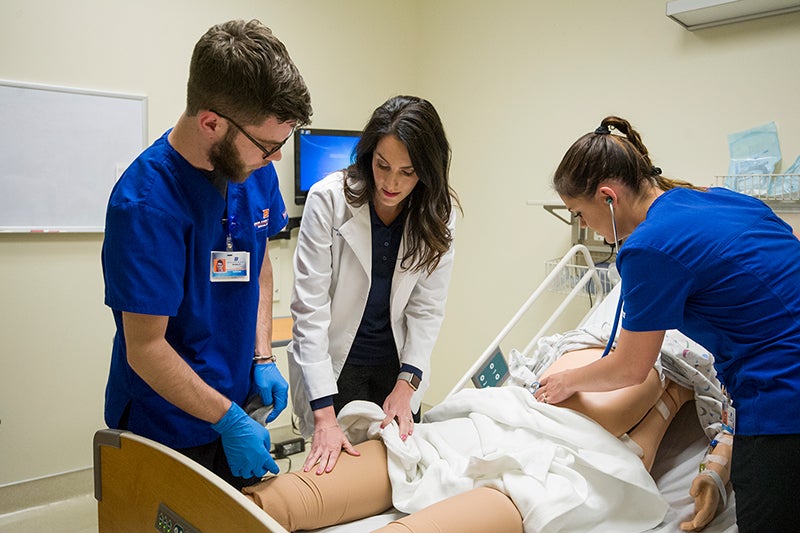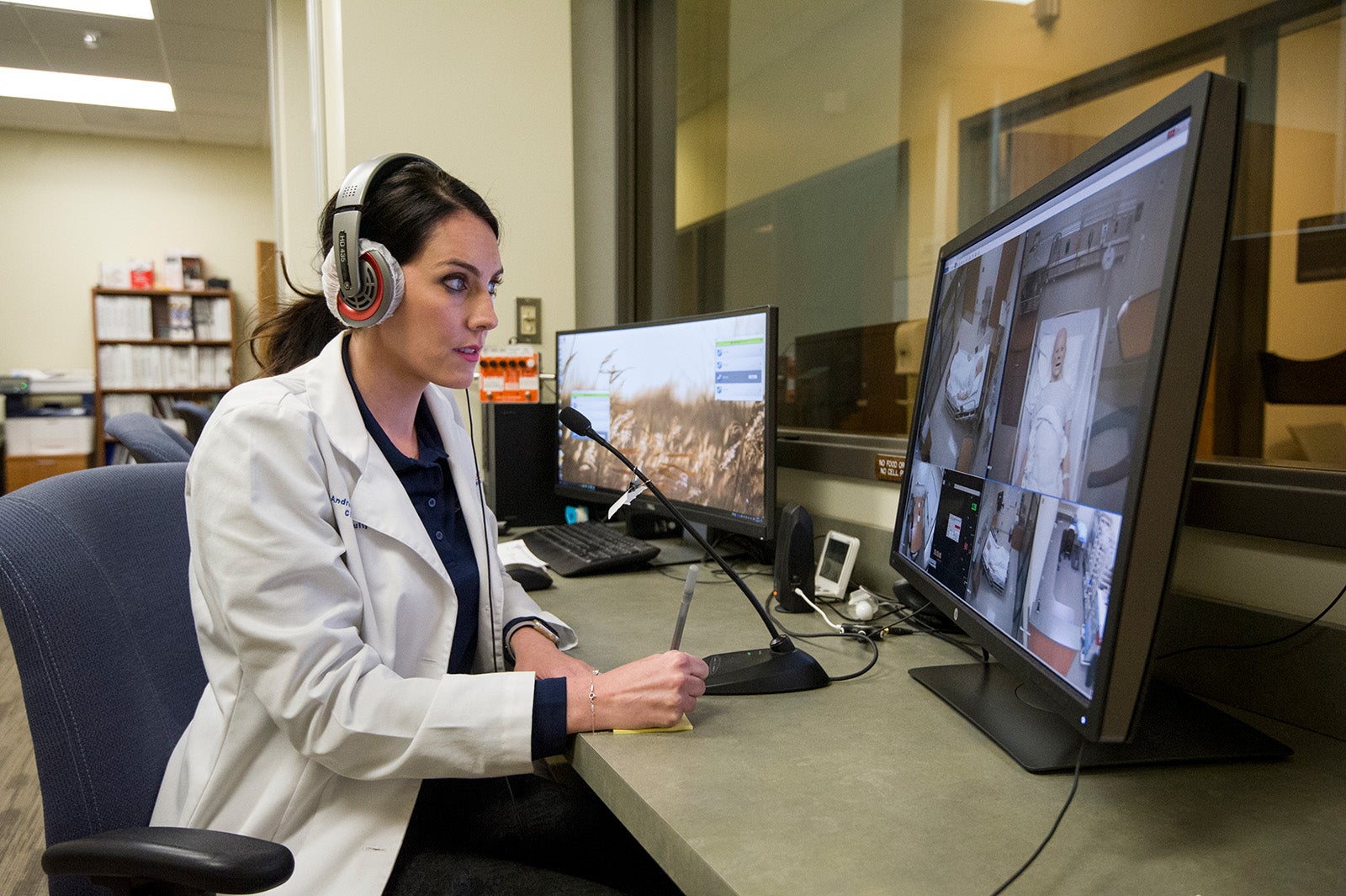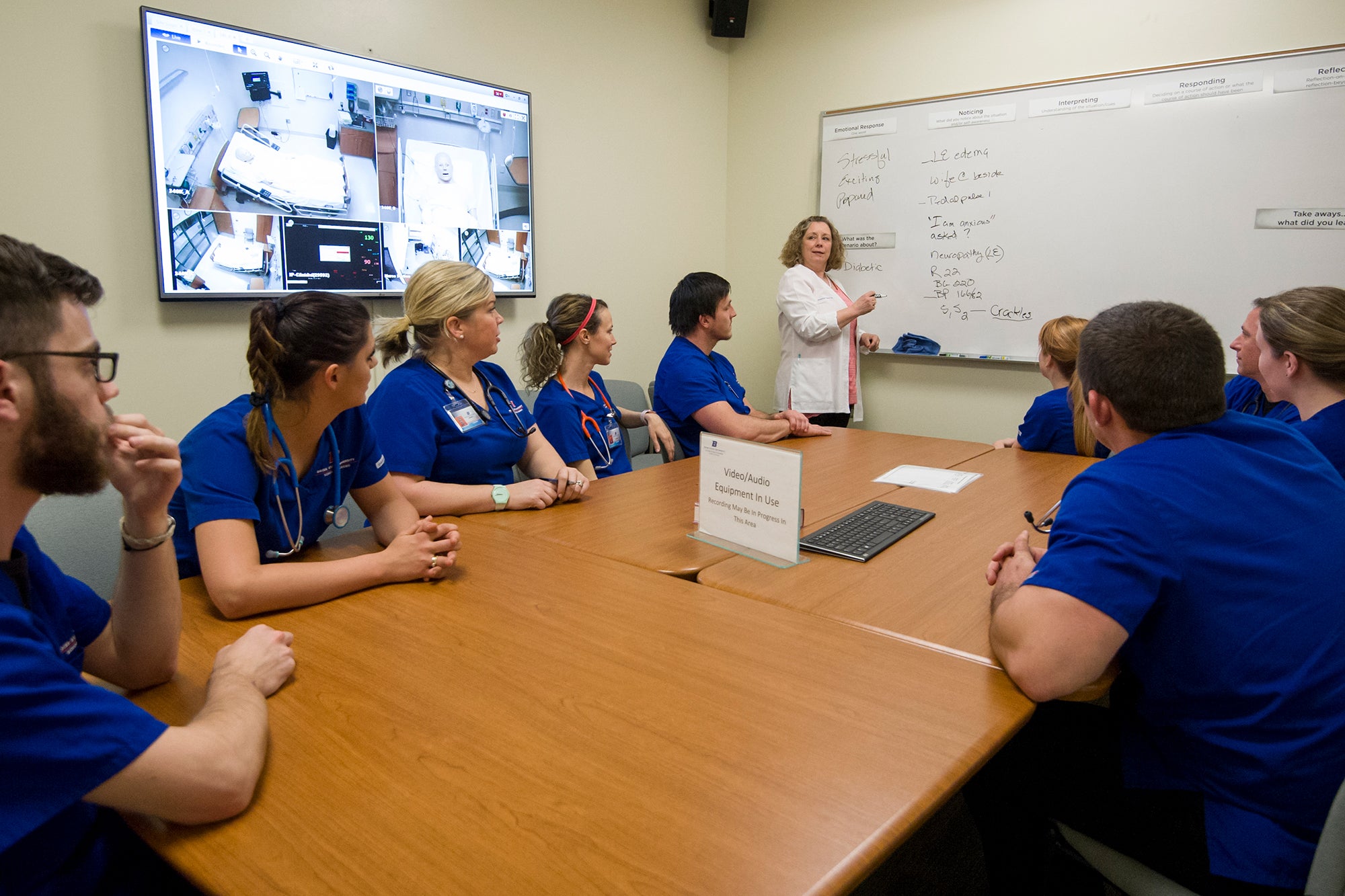Monitors beeping, intercom buzzing, red sign on the door: simulation in progress. Ever wonder what really happens on the third floor of the Norco building?
The Boise State simulation center is set up like a mini hospital, complete with a nurses station, exam rooms and the realistic sounds of a bustling hallway. Students learn through hands-on practice with high-fidelity manikins or standardized patients – actors trained as patients.
What is it?
Simulations are highly structured experiences with predictable learning outcomes, unlike clinical rotations that depend on which patients need care on a given day. Faculty write simulation scenarios in an almost script-like format that outlines information that everyone from professors to students to simulation center staff needs to know.
Scenarios are extremely detailed and present students with a specific problem to work through in a realistic way. Typically, they’re based on content students need more clinical practice with.
Associate professor Kelley Connor is also the director of simulation-based education and research. She explained that scenarios go through a rigorous writing, peer-review and pilot testing process so that “what we have in there is what’s reflecting current practice.”

Although students are aware that their experiences are manufactured, they take simulations very seriously. They often feel pressure going into scenarios, so the School of Nursing makes the environment as safe as possible – physically, mentally and emotionally.
“We want them to be able to practice like they would in a real situation and be able to make mistakes and not feel like they’re being judged or watched by a bunch of people,” said Casey Blizzard, simulation center operations coordinator.
Simulations mimic the skills needed for actual patient problems in a safe environment where mistakes are okay. Students aren’t even graded; skills perfection isn’t the point.
“It’s all about communication and practice and learning to be better,” said Blizzard.
How does it work?
Undergraduate class sizes are typically around 10 students – too large a group for everyone to practically partake in the simulation. So while two or three students may be physically participating, the rest of the students observe a live camera feed from the debrief room. The cameras also feed into the simulation control room, where staff and other faculty monitor the progress of the scenario.

Following the simulation, the faculty and students regroup for a debrief conversation. The main goal of the debrief is reflective learning.
Faculty first pose questions aimed at the gut reaction of the students, asking for their initial feelings toward the simulation. Having time to process their emotional reactions often makes it easier to shift gears to reflect on the clinical applications of the scenario.
But the debrief is not a lecture.
Rather, faculty guide the conversation to allow students time to think through their experience with their peers; follow-up questions include what the students noticed and how they responded. Students synthesize their own conclusions about what worked, what didn’t and what they might do about it in future situations.

“We’re trying to think beyond just this scenario because we can’t teach everybody everything,” Connor said. “But if I give you some ways to think about it and apply it well, hopefully you can work through that pathway in other settings throughout your career.”
Why simulation?
Simulation learning is more hands-on than a lecture, but it includes more intentional observation and reflection than a daily clinical routine. Research supports that simulation can be an effective educational substitution for traditional clinical experiences. But in 2020, it became apparent just how crucial simulation really is.
“Because of COVID, what started out as a really great teaching method has turned into a really great teaching method that every school absolutely has to do, because we can’t be in hospital as much,” said Blizzard.
In response to the changing healthcare demands, Idaho’s State Board of Nursing also changed its guidance for nursing clinical hour requirements – simulation can now count toward 50% of a student’s required clinical hours for graduation.
“That’s a lot of hours,” said Blizzard. “So we’re doing it, and we’re excited about it.”
Beyond keeping pace with current simulation practices, the entire simulation center team is focused on growth opportunities that will impact more than just the School of Nursing.
“It’s not a static program, it’s a developing program,” Connor said. “We’re continuing to grow and evolve.”